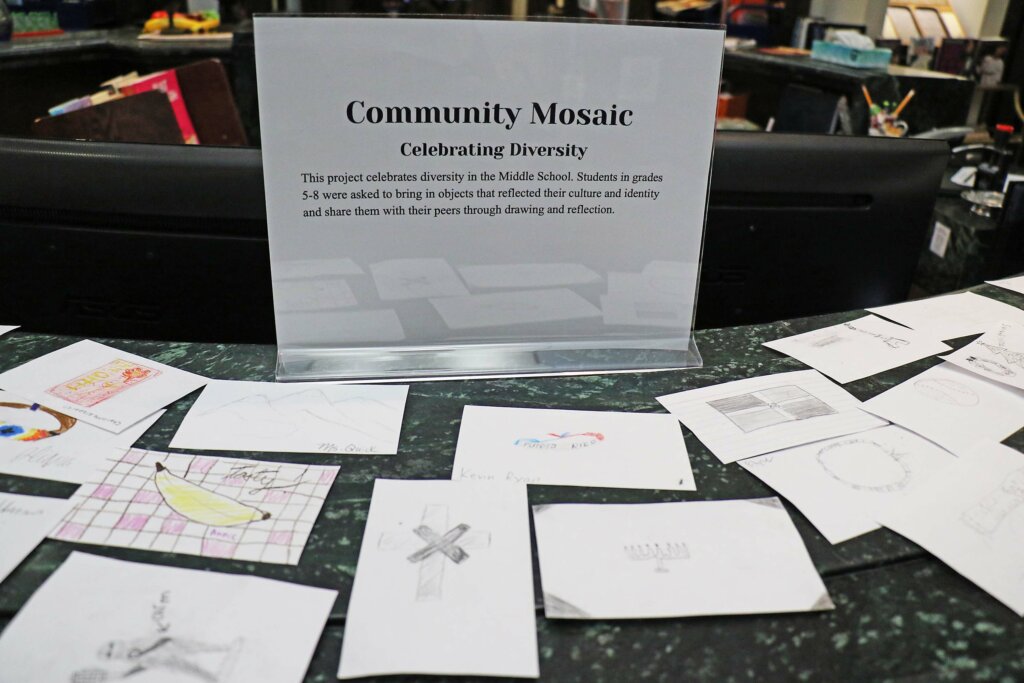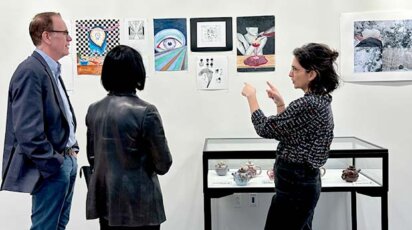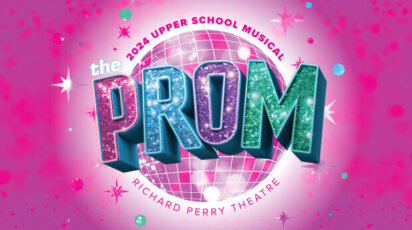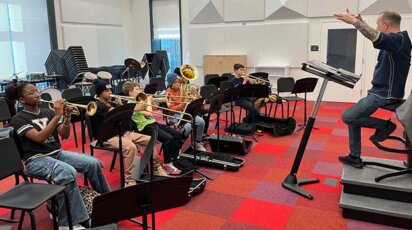News
As part of the Art & Social Change class’ Community Art projects this month, two Upper Schoolers decided to focus on Middle School students for a Diversity, Equity, Inclusion, and Belonging (DEIB) Community Mosaic workshop.
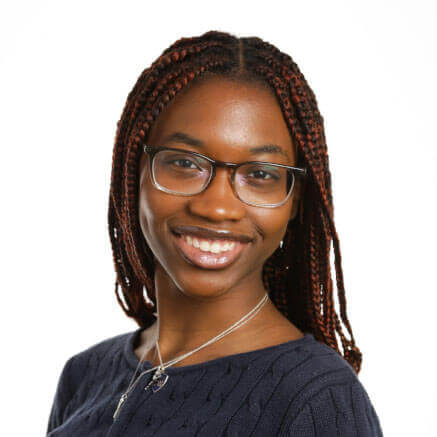
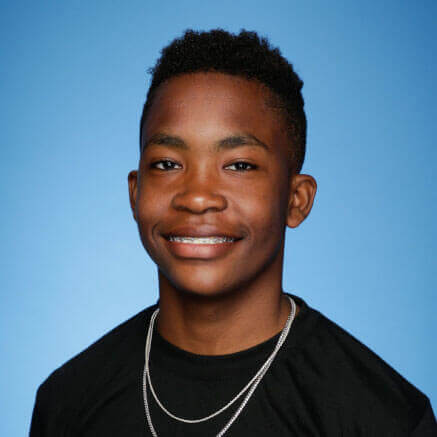
Myka Modeste ’23 and Ian Frempong-Boadu ’26 led the Community Mosaic event on December 7 in the Art Studios. The Middle School students were asked in advance to bring a cultural item or a picture of it to school. Modeste explained that a Community Mosaic is “artwork that relies on engagement from different people. Each person provides a small part of themselves and their culture.”
“In our Middle School DEIB Team planning,” said Arnelle Williams, English Teacher and MS DEIB Coordinator, “we were interested in doing a community event before Winter Break that will culminate students’ understanding of DEIB so far in the semester. I believed having a hands-on arts experience about identity would be a great way for students to put some action behind ongoing discussions about identity in their affinity/alliance or DEIB discussion groups.”
“Not only is it extremely important for them [Middle School students] to learn that their individual identity and personality is important,” Frempong-Boadu said, “but also that it should be celebrated. We were most surprised by the number of kids that actually showed up and how willing and eager they were to share their special item. It was very heartwarming and an honest peek into the life of a teacher. We are mostly just happy that we were able to do this activity and we would definitely do it again.”
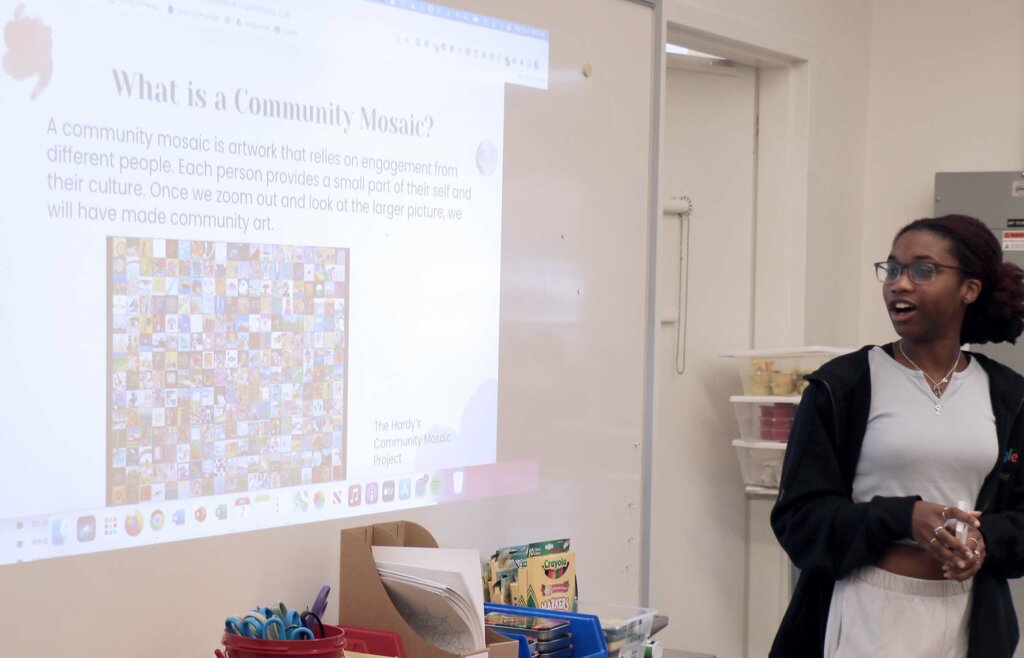
Creating Their Identity Pieces
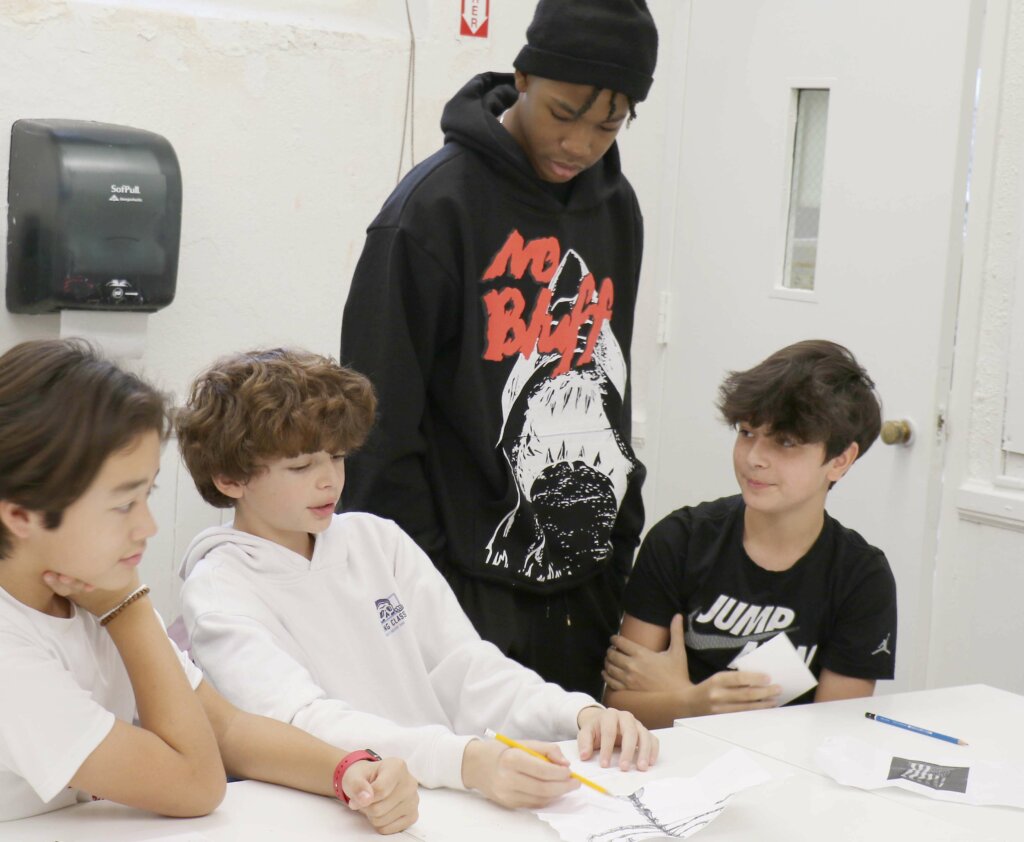
Students sat at tables in the Art Studio and then Modeste and Frempong-Boadu distributed index cards to them. Before they began on their mosaic pieces, students took turns sharing what item they had brought and what its cultural significance was. Items included necklaces, a goalie’s glove, a grandmother’s pendant, eyeglasses, and a soccer ball. Others had pictures of Christmas trees, menorahs, the American flag, and a grandfather’s pocket watch.
Students drew pictures of their items, which will become part of the mosaic. For a student who plays left wing on a hockey team, it was a picture of crossed hockey sticks. For others, it was a decorated Christmas tree or a menorah, a red envelope, or a bracelet made by a sister.
On the lined side of their index cards, students wrote down the item they had chosen, its cultural significance, and memories associated with the item. In addition, they wrote how they would like others to perceive the item and how it should be represented in society.
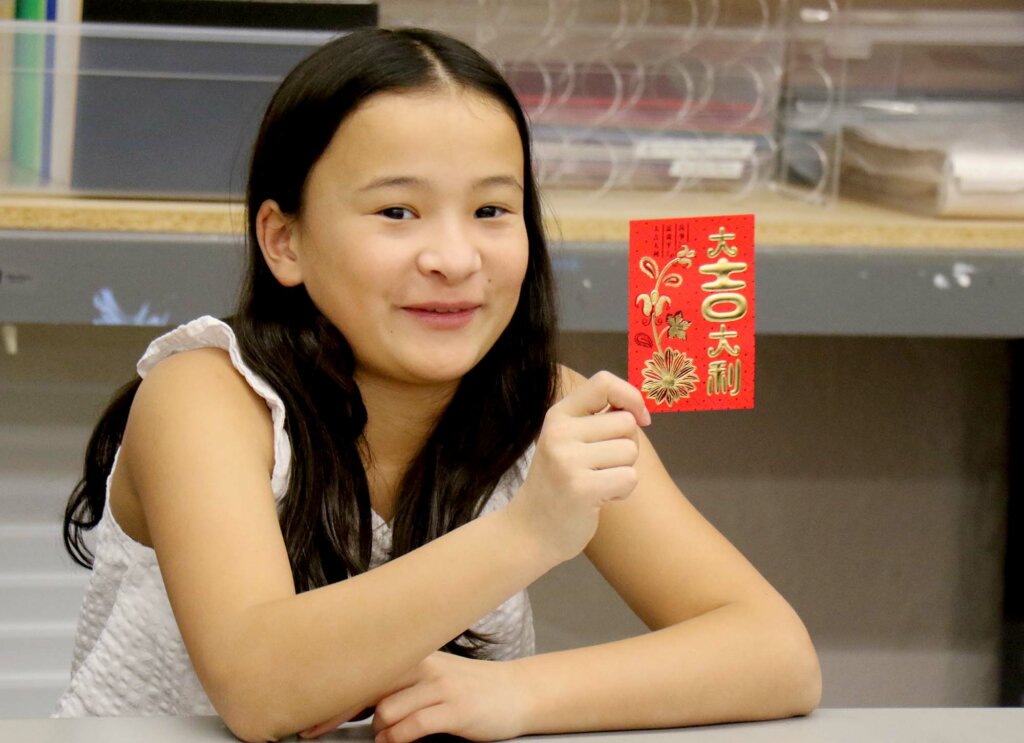
A student said that he had drawn a sparkler like one used in the Hindu Festival of Light, Diwali. Another held up a red envelope like the one that young people receive with money during Lunar New Year celebrations. An eighth grader held a soccer ball that was important to him. Another child explained that his item was a pendant featuring the image of a Mayan god, which had belonged to his grandmother. A child who chose a pocket watch wrote, “The item is my great grandfather’s pocket watch. The watch has been passed down for many years. It is significant to me because I will be the next one to get it.”
Modeste explained that the index card pictures will be assembled and displayed in the library. “Once we zoom out and look at the larger picture, we will have made community art.”
After the Project
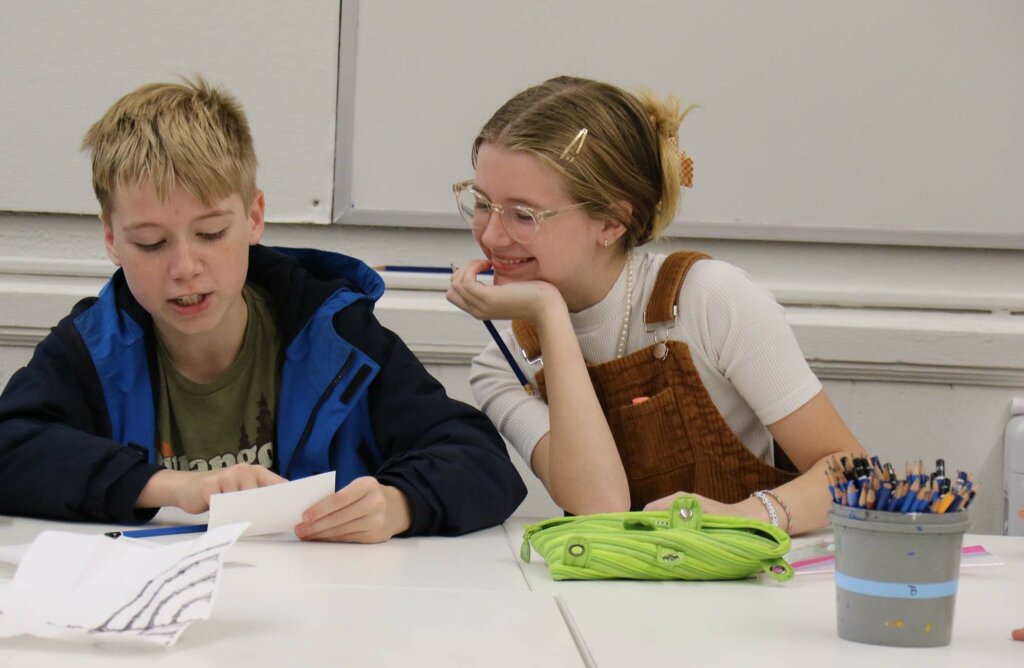
“Ian was my former eighth grade advisee,” said Williams afterward, “so to see him take on such a leadership role – teaching Middle School students how to make a community mosaic from the viewpoint of their identity was amazing! I’ve gotten to know Myka through other teachers and her enthusiasm was infectious. It’s not every day that Middle School and Upper School students come together academically or socially, so this pairing was very special. I think a blended Middle School and Upper School is truly about partnership – intentionally inhabiting the same space with each other and learning from each other, so what Ian and Myka did was both affirming and inspiring. Affirming that students do grow into awesome leaders when especially nurtured, and inspiring because students continue to teach adults daily how to be vulnerable and take risks in front of others to make positive change.”
“I hope that Middle School students took away that learning about DEIB is about learning about yourself, and you don’t have to do that learning process alone,” Williams said, “It can be done in a community, where you feel like you belong and there is great leadership. After speaking with the DEIB discussion leaders who were there and the affinity/alliance leaders who did the same activity in their regular meeting space, a recurring theme I heard is that students were excited to share who they are to each other. Sharing in an environment of belonging inspires even the most ‘unlikeliest’ of kids to reveal who they are also.”
